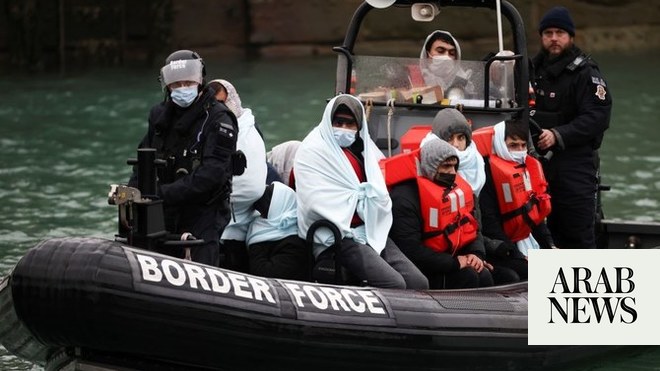
French authorities last week rescued a migrant who was attempting to swim — with flippers and a float ring — across the English Channel. The crazy attempt highlights the desperation of many migrants in Northern France to reach the UK.
Many of those migrants are Iranian. In recent months, Iranians have constituted the majority of migrants who began trying to reach the UK by undertaking dangerous journeys across the English Channel.
Iran has a long history of emigration, particularly since the 1979 revolution. Many Iranians, though often proud of their heritage and culture, have sought educational and economic opportunities abroad, as well as greater cultural and political freedom. Economic factors have contributed to emigration for decades, but the US decision to reimpose major sanctions in 2018 has prompted an economic crisis that is pushing more Iranians to try to leave their home country. The economic crisis and risk of war have also contributed to a general sense of hopelessness for Iran’s future, which drives some young Iranians to seek their own future elsewhere.
Some Iranians are able to acquire visas that allow them to work in foreign countries, but many become undocumented migrants, traveling without visas or staying beyond expired visas. Some fly to Europe on temporary visas and then apply for asylum. Others hire smugglers and join migration routes through Iran to Turkey, then onward to Europe either by sea to Greece or by land through the Balkans. The journey is difficult and dangerous.
At the peak of the refugee crisis in Europe, thousands of migrants, including Iranians, made it to Northern France, where they set up temporary camps, most famously the Calais “Jungle.” The refugees and other migrants hoped to make their way to the UK, but many became stuck in France. The Jungle was dismantled in 2016, and French authorities have cracked down on migrant camps, sometimes using brutal tactics. Nonetheless, some migrants remain in smaller camps, including Iranians.
In the past, many tried to reach the UK by hiding themselves or paying smugglers to conceal them on lorries and other forms of transportation. As French authorities cracked down on migrants, with increased financial and technical assistance from UK border authorities, this became more difficult. Some migrants — particularly Iranians — began looking for another way.
A combination of factors appears to have inspired Iranians to make the dangerous trip
Kerry Boyd Anderson
In 2018, Iranian migrants began trying to cross the English Channel in inflatable boats with outboard motors. At first, the numbers were small, but they increased dramatically in the last quarter of 2018. They have continued into 2019 — last week, the BBC reported that 902 migrants had crossed the Channel since November. Iranians are the largest national group involved in the crossings.
A combination of factors appears to have inspired Iranians to make the dangerous trip. Push factors include the worsening conditions for migrants in Northern France, concerns that Brexit might complicate claiming asylum, and migrants’ diminishing financial resources. Iranian migrants are particularly likely to seek asylum in the UK, compared to most other nationalities. They are more likely than some others to speak English and to have the education and skills to feel they could succeed in the UK. Many have family or friends there.
Some hire smugglers to help them to cross the water, though anecdotal reports suggest that some migrants work together to buy their own boat. The inflatable boats are poorly equipped for the Channel. The Dover Strait is the world’s busiest shipping lane, creating significant hazards for small, unofficial craft. The cold water presents a serious risk for hypothermia, and storms with high winds and waves can move in quickly. While it does not appear that anyone has yet died, there are significant concerns that the journey will eventually claim lives.
Iranian migrants appear to understand the risks, and yet many still make the attempt. While most are men, the groups in boats regularly include women and children. The willingness of families in particular to take these risks demonstrates a sense of desperation and determination.
Many of the attempts end with capture by French authorities, who have stepped up beach and sea patrols and return the migrants to France. Others end when British authorities pick up migrants at sea or when migrants reach British shores. While the UK has returned some such migrants to France, saying that they should claim asylum in the first safe country they reach, it appears that many remain in the UK for now.
British authorities have expressed concern about the risk of the English Channel becoming a new migration route. They have increased patrols and provided support to French authorities to try to stop migrants from crossing the water in the first place.
It is understandable that the UK and other European countries want to limit the number of migrants they take in and ensure that those who do arrive do so in an orderly, secure way. It is also understandable that young Iranians who see no hope for their future or their children’s future in their own country will do whatever it takes to make a new home in Europe. Iranian migration to Europe is unlikely to go down; indeed, with a crippled economy and the threat of war, it is likely that more Iranians will attempt the journey to the UK or other parts of Europe.












